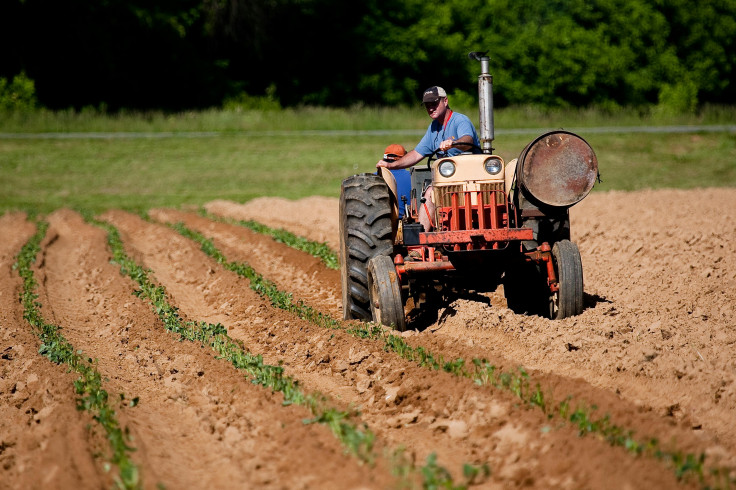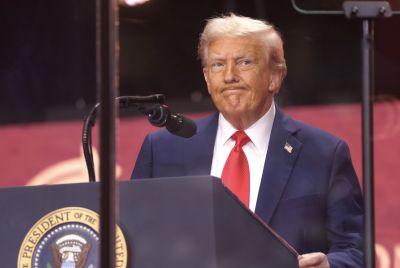Farmers Left Anxious As Trump Weighs $10 Billion Bailout Amid Tariff Turmoil

American farmers are caught in an agonising wait as President Donald Trump considers a multi-billion-dollar bailout to offset devastating losses from his trade war with China.
Whilst Treasury Secretary Scott Bessent promised 'substantial support' would be announced, a federal government shutdown has thrown the timing into doubt.
A $10 Billion Lifeline Under Discussion
The Trump administration is preparing an aid package estimated between $10 billion and $14 billion to help farmers battered by retaliatory tariffs and collapsing commodity prices. The proposal, first reported by The Wall Street Journal and confirmed by multiple outlets, targets soybean producers and other sectors that have been hit hardest by China's effective embargo on American agricultural products.
Bessent told CNBC that farmers could expect news 'as soon as Tuesday' on assistance measures. 'American farmers overwhelmingly voted for President Trump, and we've got their backs', he said, describing China's refusal to buy US soybeans as using farmers as 'a hostage or pawn in trade negotiations'.
Shutdown Compounds Farmers' Woes
The government shutdown has furloughed 42,256 USDA employees, nearly half the department's workforce. Among those affected are more than 6,000 Farm Service Agency staff who process loans, disaster payments, and conservation programmes.
'It costs money to run those combines', Chad Hart, an agricultural economist at Iowa State University, told Reuters. Even short interruptions in payments could deepen farmers' economic turmoil.
Agriculture Secretary Brooke Rollins posted on social media that the shutdown is 'hitting rural America hard'. 'On the eve of one of the worst farm economies, America's producers are left stranded', she wrote, noting that billions in disaster aid and loan processing have ceased.
The Forces Driving the Bailout
The proposal reflects the mounting economic pressure facing US agriculture. Farmers have been facing rising input costs, oversupply in certain crops, and decreased export demand.
Soybean growers, in particular, have faced steep declines in overseas sales since China scaled back imports in response to US tariffs.
China, historically the largest buyer of US soybeans, has purchased zero American beans since May, according to industry data. Last year, China bought more than half of US soybean exports. Now, with Beijing imposing 20 percent retaliatory tariffs, Brazilian and Argentinian soybeans have become far more attractive.
The timing couldn't be worse. The autumn harvest is underway, and farmers are reporting strong yields with nowhere to sell. Storage facilities are running out of space, putting further downward pressure on already depressed prices.
'It's just unfortunate that we're being used as a bargaining chip in this trade war that's not of our own doing', Caleb Ragland, president of the American Soybean Association, told Fortune magazine.
President Trump has publicly stated that tariff revenues could be redirected to support farmers. Reports from Politico note that the administration is considering using these proceeds as a significant funding source until broader trade policy benefits materialise.
At the same time, funding limitations present challenges. The US Department of Agriculture's Commodity Credit Corporation, traditionally used for farm aid, reportedly has approximately $4 billion remaining, which is well below the scale of the proposed bailout. Officials are reviewing options, including tariff revenue and internal reallocations, to close the gap.
The traditional source of farm aid, the Commodity Credit Corporation, has only $4 billion remaining, far short of the proposed package. This funding shortfall has forced administration officials to explore alternative mechanisms.
Risks, Delays and What to Watch
Implementation hurdles remain. The ongoing government shutdown has disrupted parts of the federal bureaucracy, including the USDA, raising concerns that furloughs could delay elements of the plan. Politico and Reuters report that any rollout may be slowed until the funding authority is clarified.
Legal and political questions are also at issue. While Trump has signalled he wants to direct tariff revenue to farmers, some legal analysts argue that such spending requires congressional approval. Without legislation, there may be limits on how far the administration can go in redirecting federal revenue.
The urgency of the bailout also depends on broader trade negotiations. If talks with China lead to reduced tensions or increased purchases of US farm products, pressure for immediate aid may lessen. Conversely, prolonged disputes could intensify demand for support.
What Farmers Really Want
Despite the promise of bailouts, many farmers say government cheques aren't the solution they're after. 'Farmers, ranchers, men and women that work in agriculture, these are independent folks', Aaron Lehman, president of the Iowa Farmers Union, told PBS NewsHour. 'They're not interested in bailouts. They're interested in our markets'.
Farm bankruptcies rose in the first half of 2025 to the highest level since 2021, whilst production expenses are estimated at $467.4 billion, up $12 billion from the previous year.
Trump is scheduled to meet Chinese President Xi Jinping at the end of October during the Asia-Pacific Economic Cooperation summit in South Korea. Any breakthrough on agricultural purchases could reduce pressure for immediate bailout measures. But with China already securing alternative suppliers in Brazil and Argentina, time is running out for a deal that would restore the US market position. Until then, American farmers remain trapped between political posturing and economic reality.
© Copyright IBTimes 2025. All rights reserved.



















